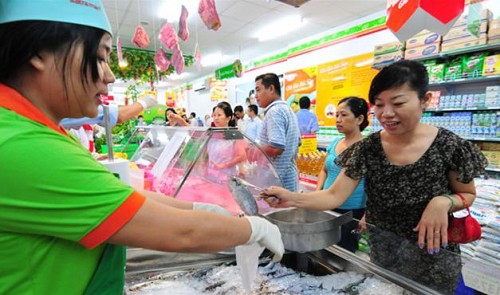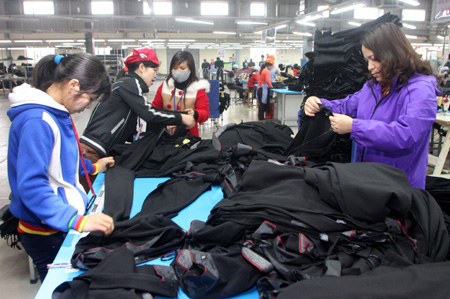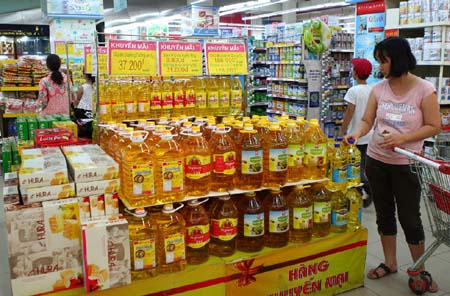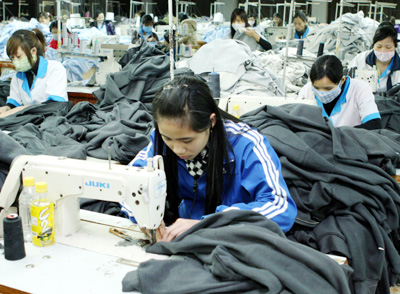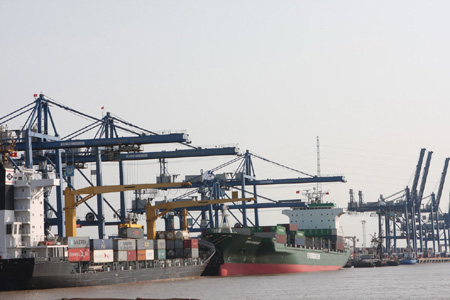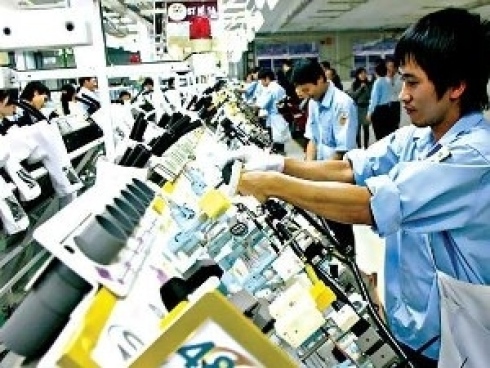China to become Viet Nam's largest trading partner
China to become Viet Nam's largest trading partner
China is anticipated to become Viet Nam's top trading partner by 2030 after taking over the position of the US, according to an HSBC Trade Connection Report released yesterday.
The report, however, notes that the US and Japan will remain the key sources of demand for Viet Nam and among the country's top three export markets in 2030.
Since signing a bilateral trade agreement with the US in 2000 and joining the WTO in 2007, Viet Nam has become the second-largest supplier of clothing and footwear to the US behind China.
Exports to Asia, excluding Japan, are forecast to grow by more than 15 per cent a year to 2020.
Beyond China, Bangladesh, India, Indonesia and Malaysia will also be fast growing export partners for Viet Nam.
Plans to expand the ASEAN Free Trade Agreement to zero tariffs on all goods by 2015 will be an additional factor supporting Viet Nam's trade with other economies in the region over the medium term.
As well as enjoying strong export growth, Viet Nam will also be an increasingly large importer, both of capital goods to meet its large infrastructure needs and of consumer goods to meet the needs of its rapidly expanding consumer market.
India, China, Turkey and Bangladesh will be its fastest growing import partners in the decade to 2030.
Viet Nam has been able to grow its textiles sector rapidly in recent years, helped by its wage competitiveness.
Indeed, clothing and apparel will make up around a fifth of the growth in Viet Nam's exports from 2013 to 2015, said Jasmine Lau, head of HSBC Vietnam's commercial banking.
The country's exports are largely weighed towards clothing and apparel, textiles and wood manufactures and telecoms equipment. These are key sectors which advanced economies tend to need to import in quantity, she said.
She also noted that it is well located to take advantage of emerging Asia's undisputed status as the most dynamic trading region in the world.
China, India, Malaysia, Indonesia, Bangladesh and South Korea will all be among the 10 fastest-growing export routes over the next 20 years.
Export growth to Europe, excluding Russia, is expected to average almost 10 per cent a year from 2013 to 2020.
Export growth to Australia, New Zealand and Oceania will pick up sharply in the longer term and will average 10 per cent from 2016 to 2020.
Exports to Latin America will grow by an average of more than 10 per cent from 2013-20, with trade routes to Brazil proving particularly dynamic.
Sub-Saharan Africa offers a massive domestic market with large import needs both in terms of capital goods for infrastructure development and in terms of consumer products for the domestic market.
The region offers strong growth prospects over the next twenty years, albeit from a relatively low base; export growth to this region is forecast to pick up from 8.8 per cent a year from 2013-15 to averaging more than 12 per cent a year from 2016-20.
Sectors to watch
Viet Nam's wage competitiveness means it has a strong advantage in low-cost manufacturing sectors such as clothing, textiles and wood manufactures and as a result it has been able to grow these industries rapidly, which will together contribute around a third of export growth from 2013-30.
According to Lau, increasing production costs in China will be advantageous to Viet Nam.
Industrialisation means that the country has substantial infrastructure needs and, as a result, industrial machinery will contribute more than 30 per cent of import growth in the decade to 2030.
"Rapid industrialisation and increasing wages, coupled with maturing consumer demand in many of the countries along the South-South corridor, are driving different types of global trade growth. This report highlights how these trends are changing the types of goods imported, manufactured and subsequently exported.
"As countries shift towards higher value sectors there are significant opportunities for companies to evolve and grow. Some of the faster growing, emerging markets show a shift from basic commodities trading in sectors such as cereals or sugar, to become a refiner or producer of branded goods based on those raw materials.
"In many of the developed markets there is a shift towards increasingly specialised sectors such as chemicals and pharmaceutical products as companies seek opportunities for higher returns," the report said.
Regarding the business environment of Viet Nam, Lau said the Government has put in place good measures including the control of inflation at around 7 per cent, and lowering interest rate.
Other things to do will include addressing bad debt, stabilising the dong value, and applying good corporate governance, especially in the banking sector, to regain confidence in the market
vietnamnews








